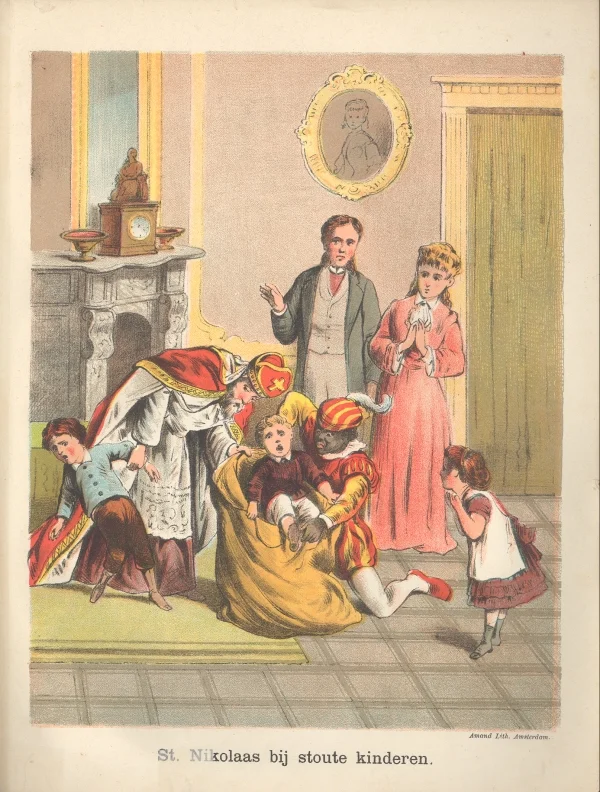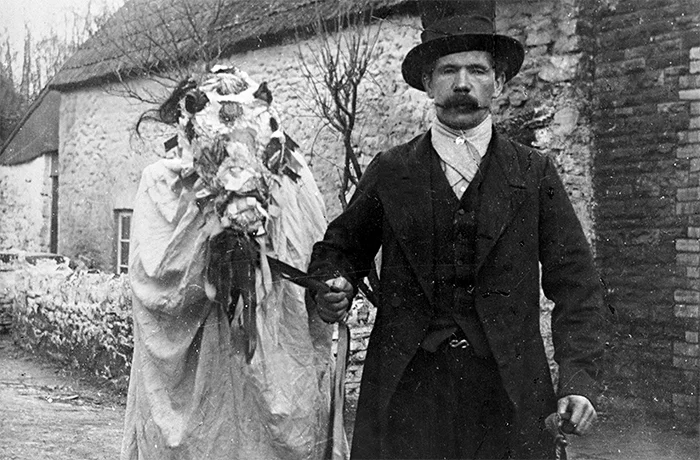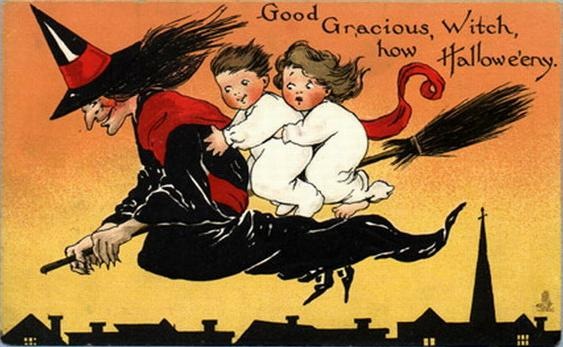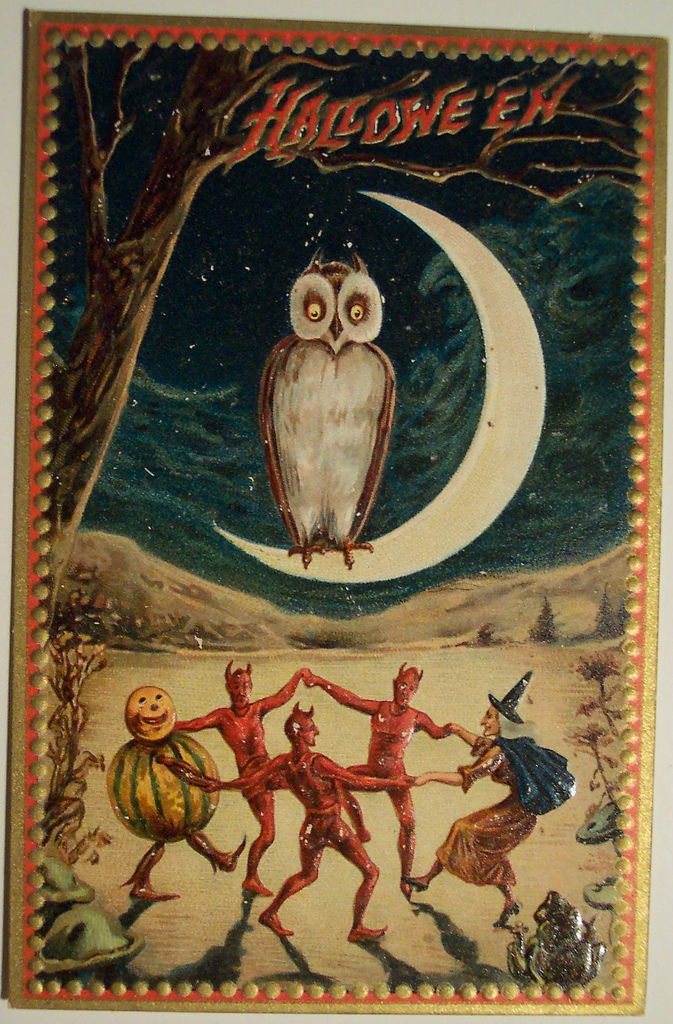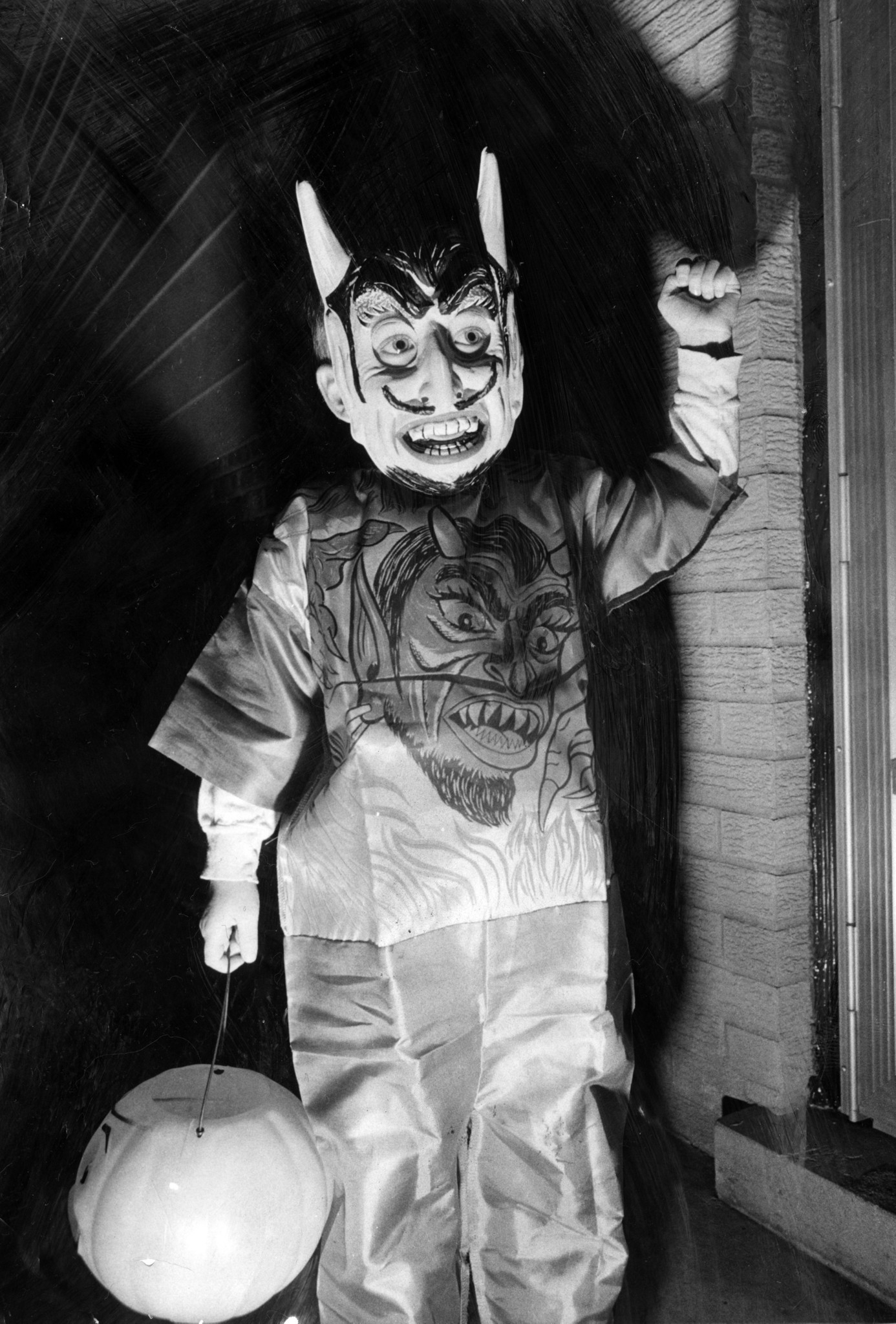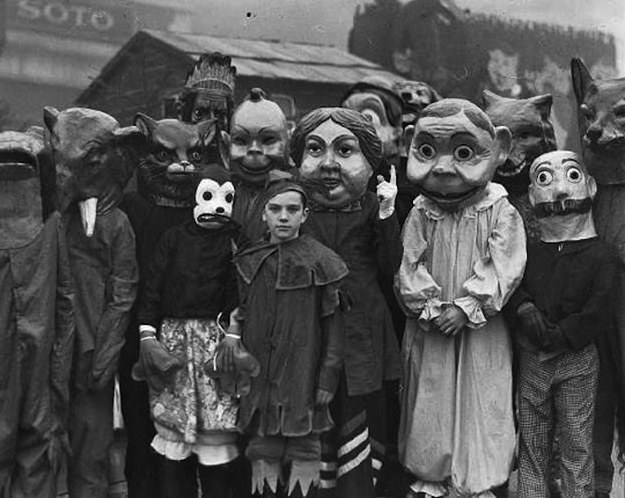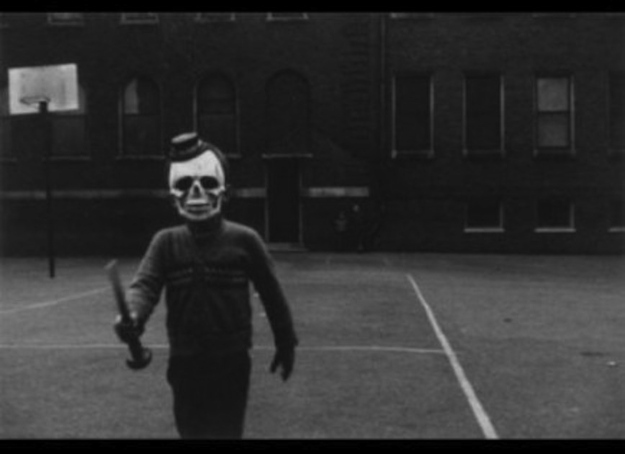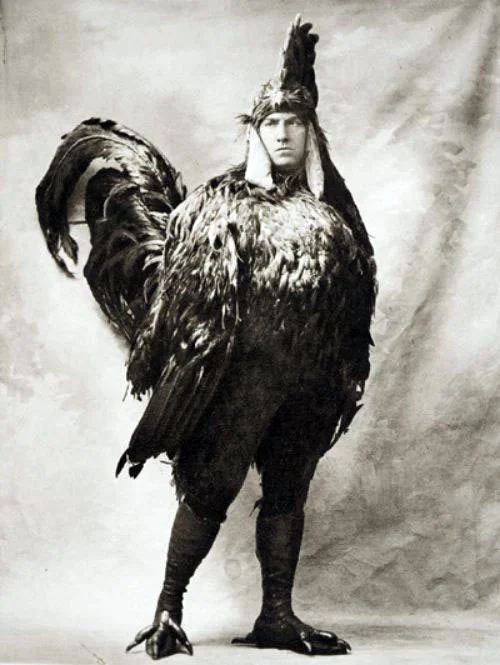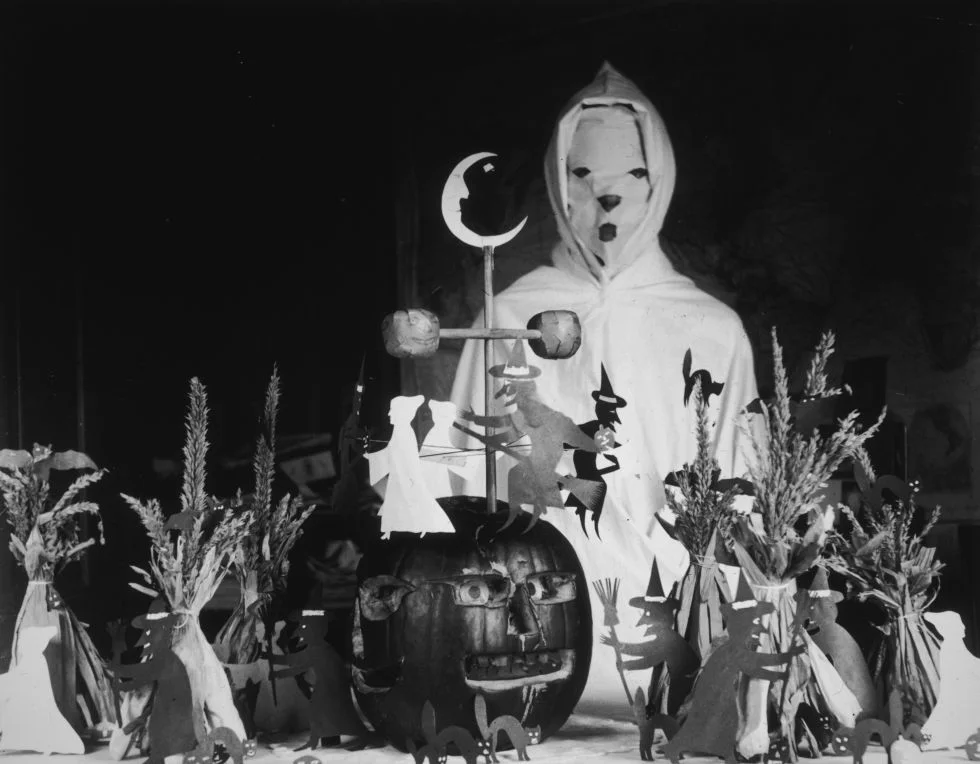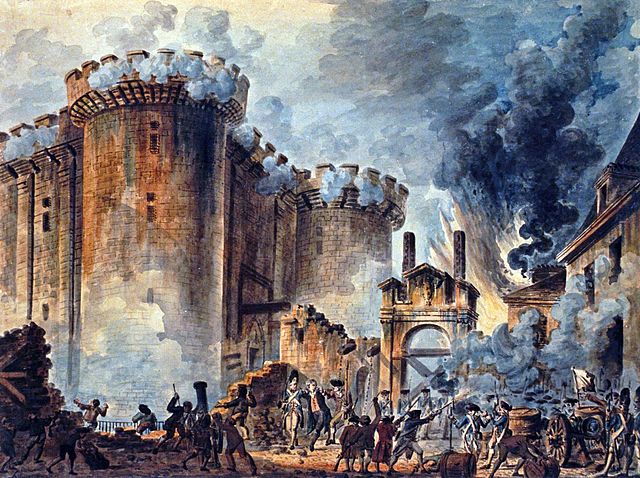Learn strange Christmas traditions from other countries.
Why are these people in blackface? It’s just one of the quirky Dutch Christmas traditions!
It’s the most wonderful time of the year, as the song goes. But in many parts of the world, it’s one of the strangest times of the year as well.
Americans have their share of kooky Christmas traditions, including the belief that a misfit reindeer with a glowing red nose named Rudolph flies through the sky, helping pull a fat man’s sleigh. Not to mention that said fat man somehow fits all the presents for every kid onto this sleigh and makes it around the world, slipping down chimneys, all in a single night.
But that’s nothing compared to some of the holiday traditions in other parts of the world.
“People in the Netherlands dress as Black Peter, a Moor, by putting on blackface. ”
For example, Christmas takes on a strangely scatalogical bent in Catalonia, a region of Spain. People place the figurine of a guy in the act of deficating in their nativity scenes as well as beat a log until it poops out treats for kids.
And in Austria and other parts of Europe, if you’re a naughty child, a devil named Krampus will kidnap you, beat you savagely with a stick and drag you to Hell.
Here are some of the more bizarre ways to celebrate the holidays in other parts of the world.
The Dutch version of Santa Claus has a helper named Zwarte Piet, or Black Peter
Go in blackface as Santa’s helper in the Netherlands.
Sinterklaas, as Santa Claus is known to the Dutch people, travels with his servant. But instead of diminutive elves, Sinterklaas is accompanied by Zwarte Piet, or Black Peter. Today people dress as Black Peter, a Moor, by putting on blackface. Not very PC — it’s amazing this tradition still exists. It wouldn’t in the United States, I’ll tell ya that.
Someone’s been naughty and needs to get stuffed into a sack and sent off to Spain!
It’s these fellows who keep tabs on who’s been naughty and who’s been nice. The good kids get presents, while the bad ones are shoved into a sack and taken off to Spain for a year of reform school.
Spiderweb decorations are common in Ukraine and Poland
Decorate the tree with spiderweb ornaments in Ukraine and Poland.
Spiderweb ornaments might sound more Halloween than Christmas, but there’s a story behind them. A poor Ukrainian widow lived with her children in a hut. The kids saw a majestic evergreen outside and wanted it to be their Christmas tree. Trouble was, they didn’t have any ornaments and couldn’t afford them.
So the woman cried herself to sleep that night. The hut’s spiders heard her sobs and decorated the tree in intricate webs overnight. In the morning, the sunrise caught the webs and made them glisten like metal. And everyone lived happily ever after, as they tend to do in these fairy tales.
In Poland, they also decorate Christmas trees with spiderwebs, but there’s a different tale behind this tradition. They believe a spider wove a blanket for baby Jesus. I’m sure it wasn’t warm and was annoyingly sticky, but I suppose they appreciated the sentiment.
If a witch can’t find a broom in your house, Norwegians think she’ll leave you alone
Hide brooms from the witches in Norway.
Apparently witches and evil spirits like to come out to play on Christmas Eve. So Norwegians, to keep them at bay, hide their brooms, which we all know is a witch’s favorite means of travel. To thwart the witches and evil spirits, men will also fire three shots from their rifles into the air.
These nuns in Venezuela were off to celebrate Christmas mass on roller skates
Roller skate to church in Venezuela.
Amid the explosions of firecrackers, entire Venezuelan families in Caracas don roller skates and head off to Catholic mass. As tradition has it, children go to bed with a piece of string tied around their toe with the other end dangling out the window. As the skaters roll past, they give the string a tug, and children know that it’s time to put their own skates on. It’s such a popular tradition that the government took to closing entire streets to traffic so families could skate together in safety. This has gotta be the only time church feels like a disco club. All that’s missing is the mirror ball.
Grab your horse skull! It’s time to go wassailing in Wales!
Carol (and beg for booze) with a dead horse in Wales.
Perhaps you’ve heard the song that begins, “Here we come a-wassailing.” This is the Welsh version of caroling. Wassail is an old England word for “cheers” and can also refer to the boozy beverages the carolers are begging for: ale or mulled wine.
The old Mari Lwyd just ain’t what she used to be
The tradition, known as Mari Lwyd, translates to the Gray Mare, involves people going from house to house, singing and challenging the families inside to a battle of rhyming insults until they get a boozy beverage. What makes this creepy is that one person dresses up like a horse, donning a white sheet topped with an actual horse skull adorned with ears and eyes.
Take me to church
Bring a rooster to mass in Bolivia.
Bolivians celebrate Misa del Gallo (Mass of the Rooster), the midnight service on Christmas Eve, by bringing along a rooster. It must get quite boisterous. But what’s with all the cocks? It’s to honor the creature that is believed to be the first to have announced the birth of baby Jesus.
Dark-haired men, come on in! Blonde and red-haired women, stay the heck away!
Hope for a dark-haired man to visit you on Christmas in Estonia and Ireland.
Your first Christmas visitor (the first-footer) can determine if your household will have a good year or not — at least that’s what the Estonians believe. If you’re a woman, blonde or red-haired, just stay home, though, please. It’s really only dark-haired gents who bring good luck.
Ireland has the same tradition, though they light a candle and, at the last stroke of midnight, throw open their front doors to welcome in the New Year. Women will beat the door with a loaf of bread, while hoping for a dark-haired gentleman to darken their doorway.
People in Finland buy small tin horseshoes to melt on New Year’s Eve as part of a fortune-telling ritual
Melt tin and predict the future in Finland.
You might need a book of symbols and their meanings for this tradition. On New Year’s Eve, Finns purchase small tin horseshoes to melt and ladles. The molten tin is dropped into a bucket of snow or ice-cold water. Once it hardens, they hold the blob up to the light to see what shape its shadow casts. If it looks like a hill, for example, there will be obstacles ahead. If it looks like a coin, you’ll be coming into some money.
Pesky Greek goblins called the kallikantzari take a break from trying to cut down the World Tree to cause mischief on the 12 days of Christmas
Kallikantzari like to scare humans — and poop in their food
Watch out for goblins in Greece.
According to Greek legend, the hobgoblins called kallikantzari come up from their underground homes on Christmas Day to play tricks on humans until Ephiphany, January 6. They’re particularly fond of sneaking down the chimney like Santa to hide in your home and jump out and scare you. The kallikantzari also rearrange the furniture and, shudder, take dumps in any open containers of food they find.
Grab a colander — it’s one of the best ways to get rid of these Greek goblins
If you want to avoid goblin crap on your cookies, burn logs or old shoes, or hang sausages or sweetmeats in the chimney. In addition, many Greeks put a colander on their doorsteps because the goblins will be compelled to count the holes. They don’t make much headway, though, according to A Scary Little Christmas, because the dim-witted creatures can only count to two.
They’re burning Mickey Mouse?! What did he ever do to hurt anyone?
Burn effigies in Ecuador.
In their own version of Guy Fawkes Day, Ecuadorians celebrate La Quema de los Años Viejos, the Burning of the Old Years. They make life-size dolls that resemble someone they dislike — maybe a local politician or the ever-popular Osama bin Laden. (I’m going to guess that Trump is a new fave.) People write notes explaining why the dolls should be burned and what changes they’d like to see in the coming year.
The effigies are proudly displayed on balconies or in windows until New Year's Eve, when they’re burned in a bonfire in the street. People jump over the fires for good luck.
Don’t be late on the winter solstice — you’ll be the Thomas Donkey and will end up the butt of jokes all day
Try not to become a donkey in Germany.
Don’t be an ass! In Germany, the Winter Solstice is also known as St. Thomas Day. It’s not a good day to be tardy. In parts of the Sauerland region, if you sleep in or get to work late, you’re given a cardboard donkey. called the Thomas Donkey and you’ll be the butt of jokes all day.
At least you’re rewarded at the end of the day with Thomasplitzchen, iced currant buns.
“The Greek goblins known as the kallikantzari like to take dumps in any open containers of food they find.”
Put on your skates and grab your cock before hitting midnight mass! Maybe you can incorporate some of these traditions into your Yuletide celebrations! –Wally



